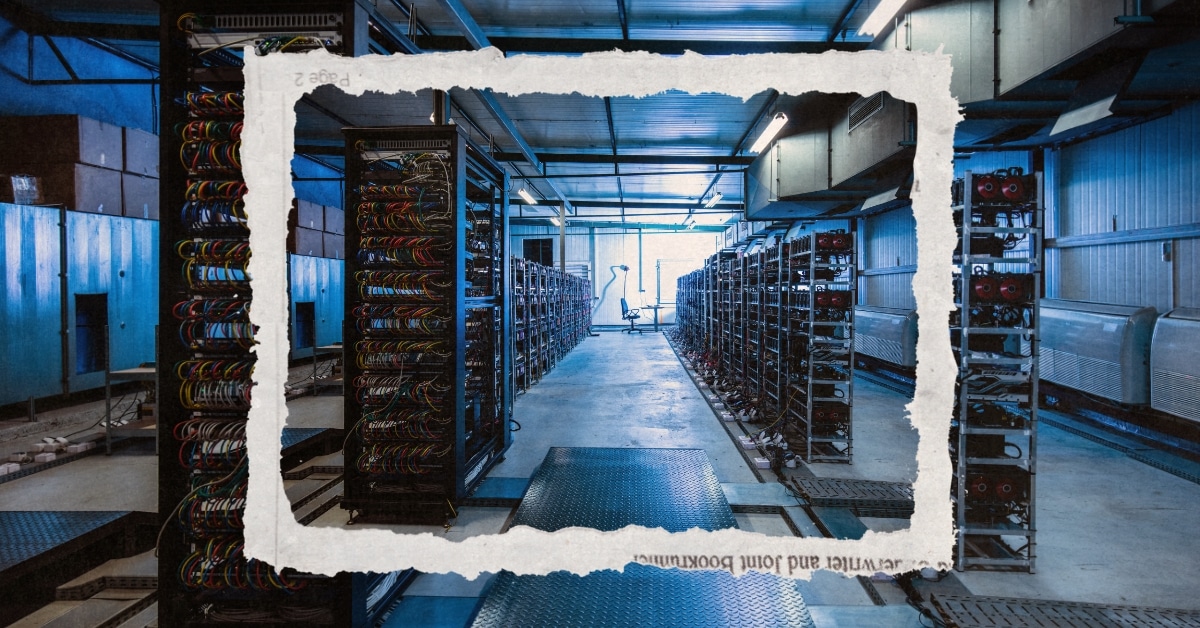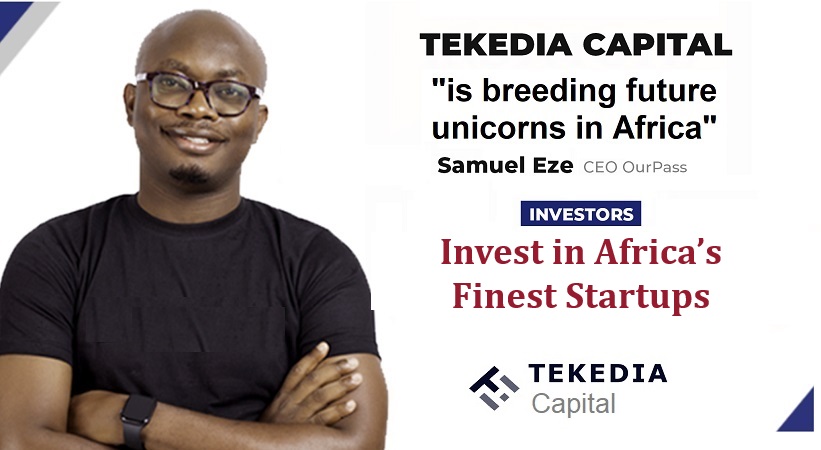News
Bitcoin could rise 5,453% by 2030, according to Cathie Wood. But is it realistic?

Enthusiasm is strong in the cryptocurrency space, but investors shouldn’t get ahead of themselves.
At the current price of around $68,500, Bitcoin (Bitcoin 0.42%) has a market capitalization of over $1.35 trillion, making it the most valuable cryptocurrency in the world. In fact, it represents more than half of the $2.55 trillion total market capitalization of the entire crypto ecosystem.
But Ark Investment Management and its technology investment leader, Cathie Wood, believe Bitcoin is set to rise much higher. Ark research suggests the cryptocurrency could rise 2,115% to nearly $1.5 million by 2030, but Wood herself recently released an even more bullish estimate, saying Bitcoin could rise 5,453% to 3 .8 million dollars.
Investor enthusiasm for Bitcoin and the cryptocurrency industry in general is through the roof right now, but widespread adoption remains far out of reach, so are Wood’s latest predictions realistic?
Image source: Getty Images.
Bitcoin may never replace traditional money
Bitcoin enthusiasts often say this cryptocurrency it is a strong candidate to replace traditional money because it is truly decentralized. It is not controlled by any person or institution, and that is how it is blockchainThe data-driven registration system is accurate and transparent.
I don’t agree with the idea that it could replace existing currencies for a few reasons. The ability to control the money supply allows governments and central banks (such as the United States Federal Reserve) to cushion economic shocks during turbulent times. Additionally, different economies operate at different speeds, which is why some currencies are more valuable than others.
If every country adopted a currency, for example Bitcoin, many exporting countries would lose one of the mechanisms through which they remain competitive. For example, two countries that export oil might have different production costs, because one might have higher labor standards than the other. As a result, that country would have to charge more money for exactly the same product. A weaker currency makes up some of that price difference for the buyer, allowing the exporting country to compete with those that have lower production costs.
The benefits of each nation having its own currency were also seen when the United Kingdom voted to leave the European Union in 2016 (an event known as Brexit). Investors feared that the UK would suffer economically due to the decline in free trade with Europe, so they quickly devalued the British pound by 16% (against the US dollar). Pessimism aside, it immediately made the UK much more competitive as an exporter on the global stage, thus cushioning some of the economic shock.
In theory, the only way Bitcoin could ever be adopted as “the” global currency is if each nation agreed to operate under a single government, with common economic goals. Given the state of world politics today, I’d bet my bottom dollar that it won’t happen anytime soon.
So far, few consumers and businesses have voluntarily adopted Bitcoin
The reality today is that very few businesses are willing to accept Bitcoin as payment for goods and services, meaning consumers don’t have much incentive to hold it except for speculative purposes. According to Cryptwerk, only 9,449 merchants accept Bitcoin, which is a drop in the bucket considering there are more than 300 million registered businesses globally.
Bitcoin plummeted 65% in 2022 before rising 255% in 2023. This level of volatility would make cash flow management impossible for any business, which is another argument against its usefulness as a currency.
Ark Invest points to eight use cases for Bitcoin that could drive its adoption by 2030. Most of them focus on countries, businesses and consumers that use Bitcoin to make payments and settle transactions. For the reasons I’ve already outlined, I don’t like the odds of this happening on a large scale. But three of Ark’s potential use cases suggest that Bitcoin could instead be used as a store of value:
- Digital Gold: Ark believes that Bitcoin could be treated like digital gold, which will create demand from multiple sources. Although Bitcoin is volatile, its decentralized nature and long-term upward trajectory support its credibility as a store of value.
- Corporate treasury: If Bitcoin is seen as a store of value, Ark believes companies could hold a small portion of the cryptocurrency on their balance sheets. This could, for example, help offset inflationary pressures over time.
- National Treasury: Many global governments and central banks hold physical gold in their reserves. Again, Bitcoin could be a great addition to those reserves if it were seen as a store of value.
The Store of Value Argument Will Not Take Bitcoin to $3.8 Million
At the Bitcoin Investor Day conference in March, Wood said the recent launch of Bitcoin exchange-traded funds (ETFs) could spur a wave of demand from institutional investors. It’s a key reason why he believes the cryptocurrency could rise 5,513% from now to $3.8 million by 2030, far above his company’s target of $1.5 million.
The problem with Wood’s predictions is that a price of $3.8 million for Bitcoin implies an eventual market capitalization of $79.8 trillion. This means that Bitcoin would be almost 3 times more valuable than the entire US economy, based on the latest annual GDP figure of $28.3 trillion. It would also be 25 times more valuable than Microsoftwhich today is the largest company in the world.
This doesn’t seem realistic to me. After all, the existence of ETFs doesn’t suddenly make Bitcoin a viable currency worthy of widespread adoption. But as a store of value, it’s conceivable that Bitcoin’s market capitalization could one day match that of gold, which currently stands at around $15.7 trillion.
This implies that Bitcoin could trade at $817,000, which would represent an upside of 1,094% from here. Therefore, the cryptocurrency could still deliver attractive gains if enough investors view it as a store of value, but I wouldn’t bet on a 5,513% rally from here to meet Wood’s predictions.
Antonio Di Pizio has no position in any of the stocks mentioned. The Motley Fool has positions and recommends Bitcoin and Microsoft. The Motley Fool recommends the following options: long January 2026 $395 calls on Microsoft and short January 2026 $405 calls on Microsoft. The Motley Fool has a disclosure policy.
News
US Cryptocurrency Rules Delayed by ‘Never-Ending’ Lawsuits

Ripple CEO says cryptocurrency industry still seeking regulatory clarity from US
Speaking to Bloomberg News on Wednesday (July 17), Author: Brad Garlinghouse he said America is behind behind other countries which have already adopted cryptocurrency regulations.
“What we’re seeing, where it’s the UK, Japan, Singapore… even the European Union, more than two dozen countries have come together to provide a framework for cryptocurrency regulation,” Garlinghouse said.
“It’s frustrating that we as a country can’t get that regulatory framework in place. And instead, we have this never-ending lawsuit coming from the SEC that doesn’t really address the problem.”
Ripple has been the target of some of these legal disputes. Securities and Exchange Commission (SEC) sued the company in 2020, accusing it of conducting a $1.3 billion operation offering of unregistered securities tied to its XRP token.
However, last year a judge ruled that only Ripple’s institutional sales of XRP, not retail sales, violated the law, a decision widely seen as a victory for the cryptocurrency industry.
As PYMNTS noted at the time, that ruling has “far-reaching repercussions impact across the digital asset ecosystem, which has long maintained that its tokens do not represent securities contracts.”
However, Garlinghouse told Bloomberg on Wednesday that the company cannot wage multimillion-dollar legal battles over each token.
He spoke to the news agency from the Republican National Convention in Milwaukee, where the party is backing the candidacies of former President Donald Trump and Ohio Sen. J.D. Vance, both of whom are considered pro-cryptocurrency.
But Garlinghouse argued that cryptocurrencies “should not be a partisan issue,” and noted that he had recently attended a conference in Washington that included Democrats, including White House officials.
“I think they were there, listening to the industry… it was refreshing to start having that conversation,” she said.
President Joe Biden earlier this year he vetoed a measure which would have ended the SEC’s special rules for crypto-asset custodians. This legislation was supported by both the digital asset industry and the banking industry.
Ripple early this year donated $25 million to the cryptocurrency industry’s super PAC Fair Smoothiewith Garlinghouse stating at the time that such donations would continue every year, as long as the industry had its detractors.
Second Open SecretsWhich monitor spending For campaigns, the PAC has spent $13.4 million this year, much of it to help defeat Rep. Katie Porter’s (D-Calif.) U.S. Senate campaign.
News
The Future of Cybersecurity in the Cryptocurrency Industry

The cryptocurrency space has had a tumultuous journey, with its fair share of ups and downs. As we look to the future, one area that remains a constant focus is cybersecurity. The digital nature of cryptocurrencies makes them inherently vulnerable to cyber threats, and as the industry evolves, so does the landscape of potential risks.
In 2022, the cryptocurrency market faced significant challenges, with over $2 trillion in market value lost. This event served as a wake-up call for the industry, highlighting the need for robust cybersecurity measures. The future of cryptocurrency security is expected to see a shift towards more regulated and established institutions taking the reins of crypto technology and blockchain infrastructure.
The decentralized nature of cryptocurrencies offers numerous benefits, such as transparency and financial inclusion. However, it also introduces unique security challenges. The risk landscape is filled with threats such as hacking, phishing, ransomware attacks, malware, and social engineering. These threats not only lead to financial losses, but also damage the reputation and trust within the cryptocurrency ecosystem.
Mini-MBA Tekedia edition 15 ((September 9 – December 7, 2024) started recordings; Register today for discounts reserved for early bird customers.
Tekedia AI in Business Masterclass Opens registrations Here.
Join the Tekedia Capital Syndicate and IInvest in Africa’s best startups Here.
The decentralized nature of cryptocurrencies offers many benefits, but it also presents unique security challenges. Cyber risks such as hacking, phishing, and ransomware pose threats to the integrity of digital assets. The infrastructure that supports cryptocurrencies is not immune to vulnerabilities, including smart contract flaws and exchange hacks.
To address these vulnerabilities, the infrastructure that supports cryptocurrencies must be strengthened. Smart contract vulnerabilities, exchange hacks, wallet breaches, and flaws in the underlying blockchain technology are significant concerns that must be addressed to ensure the security and integrity of digital assets.
As cybercriminal tactics and techniques become more sophisticated, the cryptocurrency industry must stay ahead of the curve. The future will likely see more targeted attacks, exploiting weaknesses in infrastructure, networks, and human factors. This requires a proactive and multifaceted approach to cybersecurity.
To mitigate these risks, several measures must be adopted:
Strengthening security measures: Developers, exchanges, and wallet providers must improve security protocols, use strong encryption, implement multi-factor authentication, and conduct regular security audits.
Education and awareness: Users should be educated on best practices for protecting their digital assets, including using strong passwords, recognizing phishing attempts, and using hardware wallets for secure storage.
Looking ahead, the cryptocurrency industry is expected to see an increased focus on robust security measures. Blockchain projects and exchanges are likely to invest in advanced encryption techniques and decentralized storage solutions to protect user assets. The future impact of cyber risk on cryptocurrencies will depend on the collective efforts of stakeholders to address vulnerabilities and strengthen security measures.
Collective efforts by stakeholders in the cryptocurrency space are crucial to address vulnerabilities and strengthen security measures. While challenges persist, advances in cybersecurity technologies and practices offer hope for a more secure and resilient cryptocurrency ecosystem.
The future of cybersecurity in the cryptocurrency industry depends on finding a balance between innovation and regulation. It requires a collaborative effort from all parties involved, from developers to end users, to create a secure environment that fosters trust and growth in the industry. As we move forward, it is critical that lessons learned from past events guide the development of stronger security measures, ensuring the longevity and stability of cryptocurrencies as a vital part of the modern economic toolkit.
Like this:
Like Loading…
News
Bullish XRP and RLBK price predictions rise, outpacing the broader cryptocurrency market, prompting Shiba Inu holders to switch!

Bitcoin’s one-week surge from $60,000 has pushed other cryptocurrencies into an uptrend. However, for many altcoins, this trend has been temporary. Altcoins such as XRP and Shiba Inu (SHIB) have experienced price drops. However, Rollblock, a new altcoin on the Ethereum blockchain, has thrived during this period, attracting thousands of investors looking for long-term growth.
XRP’s Nearly 30% Growth Over Last Week Drops as Selling Pressure Increases
XRP is seeing further price decline as Ripple investors withdraw their profits from the token. The surge in XRP’s price to $0.64 in the past week has provided investors with a perfect opportunity to increase their returns in the short term. With the ongoing sell-off in XRP, XRP has jumped over 8% in the past day and is now trading at $0.59. However, analysts tracking XRP indicators predict that XRP could still extend its gains by over 30% in the coming weeks.
Shiba Inu (SHIB) marks its third consecutive day of losses
Shiba Inu (SHIB) is in a period of adjustment after a week of strong gains. In the last 24 hours, SHIB has seen a jump of over 7%, reflecting a natural market fluctuation. Analysts are observing a death cross on the Shiba Inu chart, which historically signals the potential for future opportunities as the market stabilizes. As investors explore new possibilities, some are diversifying into promising altcoins like Rollblock (RBLK) to strategically rebalance their portfolios and capitalize on the emerging trend.
Rollblock (RBLK) Up Another 7% as New Investors Join Pre-Sale
Rollblock (RBLK) has taken the cryptocurrency market by storm, having attracted investors from more popular altcoins like Shiba Inu (SHIB) and XRP. Rollblock’s growth is attributed to its utility in the $450 billion global gaming industry.
Rollblock aims to use blockchain technology to bridge the gap between centralized and decentralized gambling. With blockchain technology, Rollblock secures every transaction in its online casino, providing transparency and convenience to millions of players who are uncomfortable placing bets on other iGaming platforms.
This innovative use of blockchain technology in the industry has grown Rollblock to over 4,000 new users in less than two months. With plans to add sports betting, this number is expected to grow exponentially in Q3.
Rollblock uses a revenue sharing model that splits up to 30% of its casino’s weekly profits with token holders. This happens after Rollblock buys back $RBLK from the open market and uses half of it for rewards. The other half is burned to increase the price of $RBLK.
Rollblock price has seen four increases in the past month with $RBLK tokens now selling for $0.017. Analysts predict that at the current growth rate, Rollblock could increase by over 800% before the presale ends. For investors looking for a long-term token with growth potential, phase four is the best time to buy Rollblock before its price skyrockets!
Discover the exciting Rollblock (RBLK) pre-sale opportunities now!
Website:https://Rollblockpresale.io/
Social: https://linktr.ee/Rollblockcasino
No spam, no lies, just insights. You can unsubscribe at any time.
News
Texas Crypto Miners Turn to AI as Crypto Declines

As cryptocurrency mining becomes less profitable, Texas cryptocurrency mining companies are switching to supporting artificial intelligence companies.
Bitcoin miners, with their sprawling data centers and access to significant energy resources, are ideally suited for computationally intensive AI operations, and as cryptocurrency mining becomes less profitable, companies see this shift as a logical answer to their problems.
On Thursday, Houston-based Lancium and Denver-based Crusoe Energy Systems announced a multibillion-dollar deal to build a 200-megawatt data center near the West Texas city of Abilene to support advanced artificial intelligence applications such as medical research and aircraft design, CNBC reported. The plant represents the first phase of a larger 1.2 gigawatt project.
Lancium and Crusoe’s move into AI mirrors a broader trend among bitcoin miners. The combined market capitalization of the top U.S.-listed bitcoin miners hit a record $22.8 billion in June. Companies like Bit Digital and Hut 8 are diversifying into AI, with Bit Digital securing a $92 million annual revenue deal to supply Nvidia GPUs and Hut 8 raising $150 million to expand its AI data center.
But the growing popularity of these operations also presents challenges, particularly for the Texas power grid. Last month, the Electric Reliability Council of Texas announced that the state is expected to nearly double its energy production by 2030 to meet the high energy demands of data centers and cryptocurrency operations.
Lieutenant Governor Dan Patrick expressed concern about the projections.
“Cryptocurrency miners and data centers will account for more than 50% of the additional growth. We need to take a close look at these two sectors,” He wrote on Twitter/X. “They produce very few jobs compared to the incredible demands they place on our network. Cryptocurrency miners could actually make more money selling electricity to the network than they do from their cryptocurrency mining operations.”
Analysts predict significant growth in data center power capacity, which is expected to account for up to 9% of U.S. electricity consumption by 2030.
The operations also pose challenges for nearby cities. Earlier this month, TIME reported that a crypto-mining facility was seriously compromising the health of residents in the city of Granbury. TIME reported more than 40 people with serious health problems, including cardiovascular disease, high blood pressure and hearing loss. At least 10 of the residents needed to go to the emergency room or an urgent care facility.
The disturbances were caused by the extreme noise generated by the crypto-mining facility’s fans, which are used to keep the machines cool. While the proposed data center in Abilene would use liquid cooling systems, it’s still unclear whether the facility’s operations would pose a health risk to local residents.
-

 Nfts10 months ago
Nfts10 months agoShardLab Launches ZK-Based Tool for Digital Identity and NFT Vouchers
-

 News12 months ago
News12 months agoWallet recovery firms are abuzz as stranded cryptocurrency investors panic in the bitcoin boom
-

 Bitcoin9 months ago
Bitcoin9 months agoBitcoin, Ethereum, Solana and Cryptocurrency Markets Look Ready to ‘Send’ as Stars Align, According to Investor Chris Burniske
-

 Altcoins9 months ago
Altcoins9 months agoThree Altcoins Poised for Significant Growth in 2024: ETFS, OP, BLAST
-

 Altcoins9 months ago
Altcoins9 months agoAccumulate these altcoins now for maximum gains
-

 Nfts9 months ago
Nfts9 months agoOG Crypto Artist Trevor Jones Unveils Groundbreaking Collection of Ordinals | NFT CULTURE | NFT News | Web3 Culture
-

 Bitcoin9 months ago
Bitcoin9 months agoBillionaires are selling Nvidia stock and buying an index fund that could rise as much as 5,655%, according to some Wall Street analysts
-

 Videos12 months ago
Videos12 months agoLIVE FOMC 🚨 Could be CATASTROPHIC for Altcoins!
-

 Videos11 months ago
Videos11 months agoSTOCK MARKET FUD! ⚠️ [Why This Is GREAT For Bitcoin Traders!]
-

 Videos12 months ago
Videos12 months agoATTENTION all cryptocurrency traders! [This Altcoin Dump Changes Everything]
-

 Videos12 months ago
Videos12 months agoAttention: a historically significant BITCOIN signal has just appeared!
-

 Altcoins10 months ago
Altcoins10 months agoXRP, Shiba Inu, Cardano, Solana mega bounce imminent as Altcoin bottom remains strong ⋆ ZyCrypto







